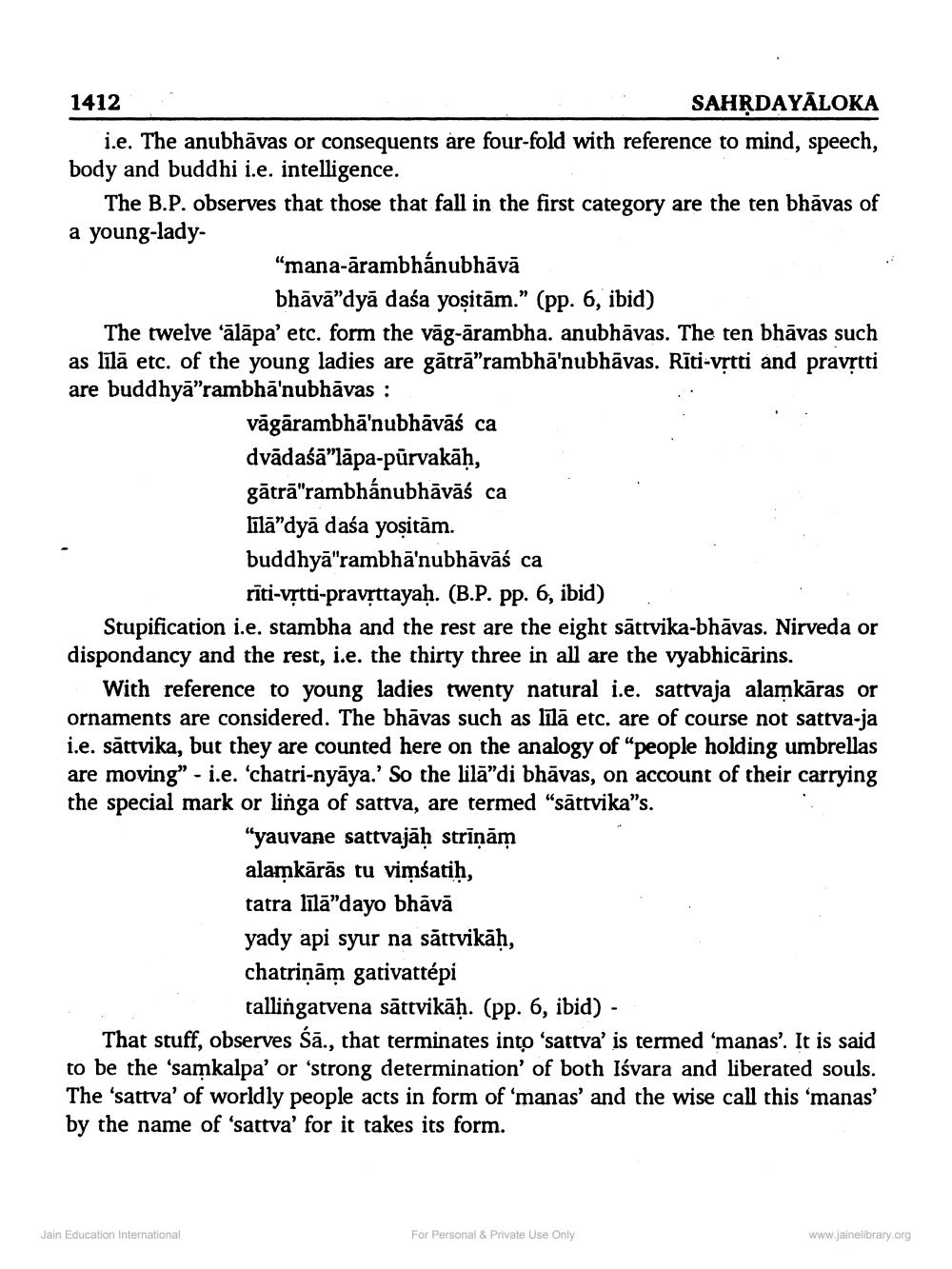________________
1412
SAHRDAYĀLOKA i.e. The anubhāvas or consequents are four-fold with reference to mind, speech, body and buddhi i.e. intelligence.
The B.P. observes that those that fall in the first category are the ten bhāvas of a young-lady
"mana-ārambhánubhāvā
bhāvā”dyā daśa yoșitām.” (pp. 6, ibid) The twelve 'ālāpa' etc. form the vāg-ārambha. anubhāvas. The ten bhāvas such as lilā etc. of the young ladies are gātrā"rambhā'nubhāvas. Rīti-vrtti and pravrtti are buddhyā"rambhā'nubhāvas :
vāgārambhā'nubhāvāś ca dvādaśā”lāpa-pūrvakāḥ, gātrā"rambhánubhāvāś ca līlā"dyā daśa yoșitām. buddhyā"rambhā'nubhāvās ca
rīti-vrtti-pravíttayah. (B.P. pp. 6, ibid) . Stupification i.e. stambha and the rest are the eight sāttvika-bhāvas. Nirveda or dispondancy and the rest, i.e. the thirty three in all are the vyabhicarins.
With reference to young ladies twenty natural i.e. sattvaja alamkāras or ornaments are considered. The bhāvas such as līlā etc. are of course not sattva-ja i.e. sättvika, but they are counted here on the analogy of “people holding umbrellas are moving" - i.e. 'chatri-nyāya.' So the lila"di bhāvas, on account of their carrying the special mark or linga of sattva, are termed "sättvika's.
"yauvane satrvajāḥ strīņām alamkārās tu vimšatih, tatra līlā"dayo bhāvā yady api syur na sättvikāḥ, chatriņām gativattépi
tallingatvena sāttvikāḥ. (pp. 6, ibid) - That stuff, observes Śā., that terminates into 'sattva' is termed 'manas'. It is said to be the 'samkalpa' or 'strong determination of both Isvara and liberated souls. The 'sattva' of worldly people acts in form of 'manas' and the wise call this ‘manas' by the name of 'sattva' for it takes its form.
Jain Education International
For Personal & Private Use Only
www.jainelibrary.org




